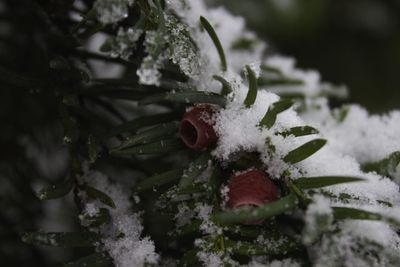Selecting Yew Plants for Zone 5
Deciduous plants offer springtime excitement, autumn color, and a range of forms, but evergreens have the tenacity and durable green beauty. Yew plants are shrubs to small trees which enliven the garden even in the middle of winter. There are many cold-hardy yews that fit the bill for zone 5, most of which are adapted to full or partial sun locations and even some shady areas. If you need a plant for any light exposure that grows slowly and tolerates occasional neglect, yews might be for you. Growing yews in cold climates require some protection from wind, as cold breezes can damage the tips of the needles and well-draining soil. Other than that, these plants can adapt to almost any soil as long as it is acidic and situation. Yews make formal hedges, elegant trees, green groundcover, foundation plants, and even topiaries. You can even shear the plant quite severely and it will reward you with emerald-green growth.
Zone 5 Yew Varieties
The smaller yews can get 3 to 5 feet (1-1.5 m.) in height. Yews in zone 5 are wonderful in containers, as borders and accents behind other plants.
‘Aurescens’ grows only 3 feet (1 m.) tall and wide, and its new growth has a golden tint. Another low grower is ‘Watnung Gold’ with bright yellow foliage. A good groundcover is ‘Repandens,’ which gets 4 feet (1 m.) tall but grows much wider. The dwarf Japanese cultivar ‘Densa’ is compact at 4 feet (1 m.) tall by 8 feet wide (2 m.). ‘Emerald Spreader’ is another great groundcover at only 2 ½ feet (76 cm.) in height and sprawling out with deep green needles. Some other smaller yew plants for zone 5 to consider are ‘Nana,’ ‘Green Wave,’ ‘Tauntonii,’ and ‘Chadwikii.’
Privacy hedges and stand-alone trees need to be big, and some of the largest yews can approach 50 feet (15 m.) or slightly more when mature. Plant these big guys in a field or on the calm side of the house when growing yews in cold climates. This will prevent wind shears from damaging the delicate leaves.
The North American yews are the largest forms. The native Pacific yew is in this group and achieves 50 feet (15 m.) with a lovely loose pyramid shape. ‘Capitata’ develops into a medium-sized tree with needles that bronze in winter. A slender, yet tall specimen is ‘Columnaris’ with year-round green foliage. Chinese yew grows up to 40 feet (12 m.) while English yews generally are a bit shorter. Both have numerous cultivars with variegated to golden foliage and even a weeping variety.
Give yews in zone 5 a little protection the first year or two in case long freezes are expected. Mulching the root zone should keep the youngsters healthy until the spring thaw.
